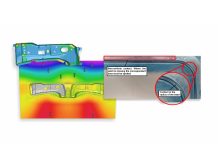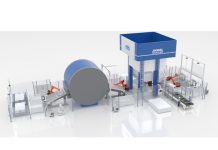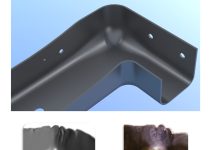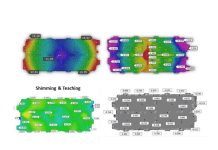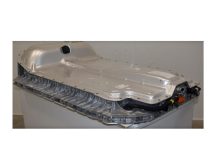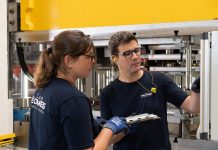Introduction
Phoenix 3D Metaal is a producer of stamped parts with a unique niche in the metal-forming industry. They offer a specialized rubber pad forming process (RPFP) that enables the development of a wide range of designs using a single tool. Unlike companies focused on mass production, Phoenix targets a different market, ensuring low costs, high standards, and a capacity of up to 10,000 parts per year. Serving industries like agriculture, food processing, material handling, and construction machinery, Phoenix has enhanced their specialized process over the years through advanced simulation techniques, achieving a near 100% hit rate.
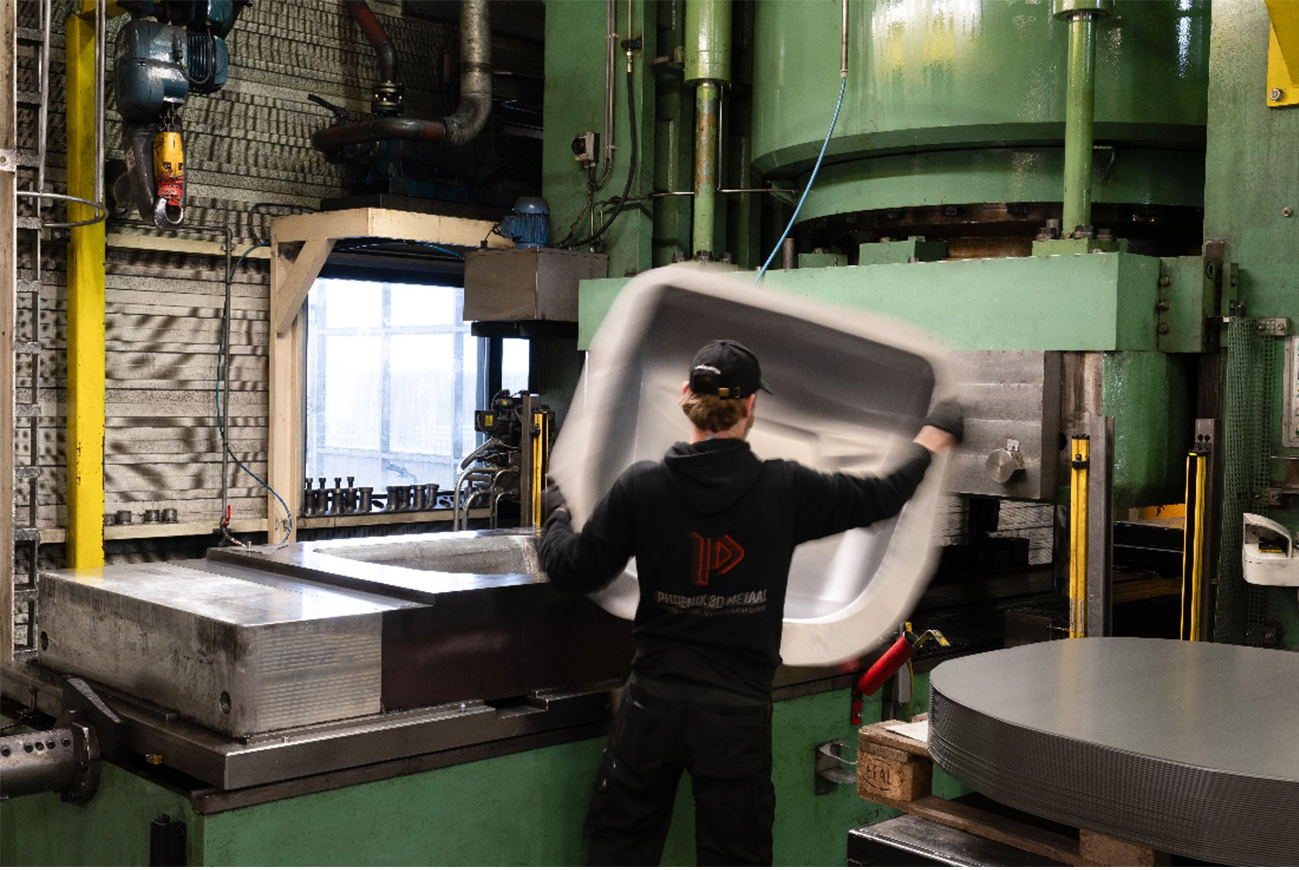
“You Think It, We Make It” – The Phoenix 3D Metaal Approach
“You Think It, We Make It” is Phoenix’s mission statement, reflecting the team’s commitment to transforming customer dreams into reality, regardless of complexity. They produce high-quality parts within weeks, eliminating the complex tooling typically required for mass production. Their rubber pad forming process uses a single lower tool, with a rubber pad serving as the upper tool. The rubber pad is pressed with significant force against the sheet metal to shape it, reducing both time and costs associated with tooling.
One limitation, however, is the duration of the process. Extracting parts from RPFP takes longer compared to traditional stamping lines. RPFP is a viable option if the number of parts does not exceed a certain threshold. Based on experience and analysis, Phoenix has determined that this range is between 250 and 10,000 parts per year. As long as the annual requirement for parts falls within this range, they can deliver cost-effective and precise components that rival the high-quality results produced by traditional stamping.
The Rubber Pad Forming Process: A Cost-Effective Alternative
The rubber pad forming process has been around for nearly 100 years. It is a straightforward technique that employs a single lower tool to shape a metal sheet by pressing a rubber pad down with significant force.
As the rubber presses against the tool through the sheet metal, it takes on the shape of the lower tool. The sheet metal, positioned between the two, also conforms to the shape of the lower tool. Once the rubber pad retracts with the upper section of the press, the rubber returns to its original shape, while the sheet metal retains the stamped form.

The conventional stamping and deep-drawing methods use multiple tools, such as a binder, punch, and die, all of which are essential for achieving quality results. In contrast, RPFP uses a single punch, making the process more economical and straightforward than traditional alternatives.
However, the RPFP process has a break-even point for production runs. Beyond this point, the conventional process becomes more cost-effective. Therefore, Phoenix is ideal for customers seeking short production runs with high quality. Most of their customers come from niche industries or require custom production.
Simulation-Driven Precision: The Role of AutoForm
Precision is critical at Phoenix 3D Metaal. There is very little tolerance for error, as any deviation from planned costs can significantly impact a customer’s plans. They must meticulously plan and validate designs before finalizing them. However, they cannot rely on the traditional method of building multiple tools and conducting trials to achieve the optimal design through trial and error. This is where AutoForm plays a vital role.
Phoenix uses simulation to evaluate the feasibility of customer designs, recommend beneficial modifications, and validate these changes before proceeding to tool design and production. As Rudy Daams, a key figure at Phoenix, explains, “We can’t afford to get it wrong.”
In addition to cost control, they also maintain short lead times—often as little as six weeks—to ensure the success of the initial tool design. The simulation process is essential for identifying potential issues promptly, allowing for effective resolutions. Problems such as material thinning, excessive springback, and wrinkling can be detected and addressed before production begins. Although the Hydromag module is not a direct replica of Phoenix’s RPF process, it can flag feasibility issues and offer insights for improvement. By integrating simulation with years of experience in RPFP, Phoenix now achieves a 100% success rate in first-hit tryouts.
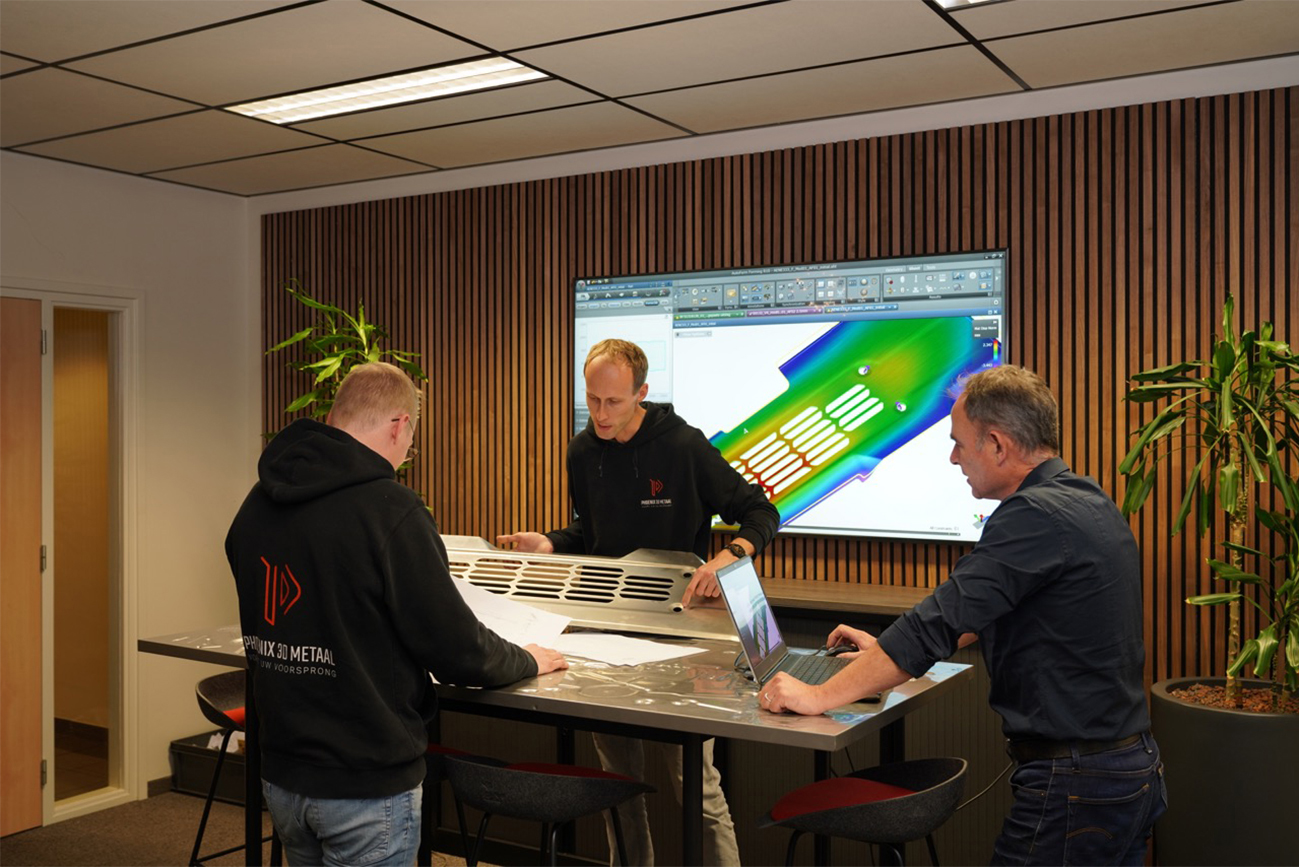
Why Is Cost Control So Important?
Phoenix’s ideal customers are those who require small to medium production runs. Most of these customers operate with limited budgets, so any increase in costs significantly impacts their profitability and business plans. This contrasts with mass production, where economies of scale can absorb increased costs from errors and delays.
As a result, Phoenix must provide accurate quotes and deliver parts on time. Precise feasibility assessments are not only helpful; they are essential for gaining a competitive edge. By identifying potential issues early, Phoenix ensures that the final product is delivered on schedule while adhering to the stipulated budget.
This level of performance has ensured a consistent influx of clients seeking small to medium production runs without the need to commit to high-volume manufacturing. Phoenix 3D Metaal serves a wide variety of companies varying in size. For instance, startups frequently turn to Phoenix for smaller production runs due to uncertain market demand, and Phoenix is well-equipped to meet their needs without compromising quality.
Phoenix’s Diverse Customer Base and Process
Phoenix’s business model appeals to customers across industries. Most sectors require small production runs when a business is new, experiences low demand, or offers custom parts.
The company’s clients span various sectors, including agriculture, material handling, transportation, medical, construction, the arts, and even coffee machine manufacturing. A notable example from their stamping line is a large coffee machine that requires 500 parts annually.
RPFP is compatible with all levels of design complexity. This enables Phoenix to generate high-quality results, whether it is something straightforward, such as a wheelchair mudguard, or complex, such as the parts for an advanced speed control system.
This unique capability guarantees a continuous variety and challenge in operations, both in terms of customers and part design. As Rudy notes, “We are never bored.” Customers with highly intricate shapes can achieve exceptional levels of accuracy with RPFP, without worrying about high costs or large minimum orders associated with mass production.
Conclusion
Since the integration of simulation, Phoenix has undertaken more complex projects with increased confidence. Before implementing simulation, the process relied heavily on trial and error, requiring multiple adjustments and leading to increased costs and lead times. To minimize risk, Phoenix was compelled to focus on simpler components with a higher likelihood of success on the initial attempt.
With simulation, Phoenix can operate two to three times faster on average, depending on the complexity of the part. This improvement has increased the number of projects they can undertake and enables them to confidently select only those projects that are technically feasible and economically viable.
As Phoenix has improved its project screening processes, the number of successful first-hit tryouts has increased. This has bolstered their reputation in the market as a reliable provider of small-series, precision metal parts, attracting a steady stream of clients. The combination of expertise and technology allows Phoenix to tackle even the most challenging design problems with innovative solutions.



